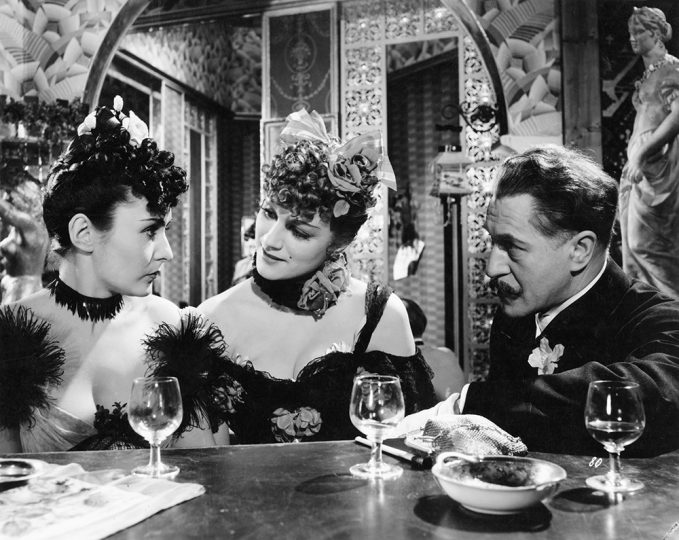František Čáp was a Czech filmmaker whose rare talent repeatedly clashed with restrictive artistic conditions. In Czechoslovakia, he first worked as a screenwriter and from 1939 also as a director. He originally planned his directorial debut to be an adaptation of a story titled Stáša from Vojtěch Mixa’s book Medvědi a tanečnice. Čáp worked on the adaptation with his colleague Václav Krška whom the Protectorate government unfortunately deemed inconvenient in 1938. The film was eventually made two years later, after Čáp had become a respected Lucernafilm author thanks to his two successful films – the romance Fiery Summer (Ohnivé léto, 1939) and the warmly welcomed Grandmother (Babička, 1940), an adaptation the Božena Němcová novel.
As opposed to in the tense times immediately after the Munich Agreement, during the Protectorate era, adapting escapist subjects from the past was desirable. But even though a costume melodrama set in the final years of the Austro-Hungarian Empire was suitable for the period dramaturgy, thanks to its apolitical theme, the script approval process wasn’t very smooth.
Part of the people responsible had reservations about the frivolity of the libretto. Čáp, however, defended his adaptation on the second attempt and wasn’t forced to make any concessions to the Office of the Reich Protector as he was in case of his Jan Cimbura (1941), which premiered a month after Nocturnal Butterfly. In Jan Cimbura, the subordination of film production to the German occupiers was manifested by inserting a scene of a Jewish pogrom.
The protagonist of Nocturnal Butterfly is an honest governess from a small garrison town named Marta Dekasová who falls in love with First Lieutenant Varga. But he rejects her because of his wife, actress Helena. Marta therefore apathetically succumbs to her long-time suitor Lieutenant Kala. This happens not long after the man tries to rape her. Because of the jealousy of her employer, young Marta is dismissed from her position. She moves to the capital city, where she works as a bar singer. Another man, the student Michal, falls for her. But Marta still longs for Varga.
The tragic love story, full of passion, music and declarations in which the characters effusively express their feelings, is reminiscent of romance novels.
But Čáp, in collaboration with cinematographer Ferdinand Pečenka and costume designer Ferdinand Vácha, managed to turn the kitsch story into an opulent spectacle whose form is much more compelling than its content. The film made good on the promises of its sensational promotional campaign, announcing the film event of the season.
For the number and intensity of its unceasing audiovisual discharges, Nocturnal Butterfly can be compared to the best melodramas by German director Max Ophüls. His films such as Roundabout (La Ronde, 1950), Le Plaisir (1952) and Lola Montés (1955) also keep the audiences thoroughly engaged with torrents of emotions, expensive costumes and set designs, elaborate camera choreography, original scene juxtapositions and seldomly fading music.
Both in Ophüls’ films and Nocturnal Butterfly, dynamic scenes rhythmised according to classical compositions or musical motifs of individual characters are reminiscent of ballroom dancing.
In accordance with melodramatic conventions, Nocturnal Butterfly is organised according to distinct opposites. Innocence versus corruptness, small town versus big city, day versus night. The clashes are manifested particularly in lighting and costumes. Marta’s moral fall is expressed by abandoning well-lit scenes and moving into shadowy places and replacing restrained simple clothing with provocative dresses, which attract attention and reveal more than they conceal. The persuasiveness of Marta’s struggle with her own conscience is emphasised through the spectacular performance of lead actress Hana Vítová.
The dramatically rewarding character of Marta aroused great interest among Czech film stars. For instance, Lída Baarová and Adina Mandlová wanted the role. Mandlová was eventually cast as prostitute Anča. Čáp wanted Hana Vítová to become his Marta from the very beginning. The actress, whose pseudonym was invented by Jiří Voskovec and Jan Werich, had appeared in several previous films, but none increased her renown and confirmed her talent as Nocturnal Butterfly did.
The film was premiered in July 1941 at the Zlín film showcase Filmové žně. The reception was positive. If some critics had reservations about the sentimentality of the story, they simultaneously praised the beauty and richness of Čáp’s film language and his narrative easiness. The director was also praised in the Reich and received the Protectorate National Award in several categories. A huge success for the film was its screening at the Venice festival where it received the Biennale Plaque.
Thanks to good relations with the Protectorate management of Czechoslovak Film and specific misconduct related to Jan Cimbura and Prince Wenceslas (Kníže Václav, 1942), František Čáp was accused of collaborating with the Nazis. But, in 1946, he refuted all the allegations before a committee and was allowed to continue in his career.
Thanks to his leftist political orientation, Čáp was even voted the artistic director of a newly established production group. But after four more films, he was banned from making more because of critical remarks towards the working class. He was, however, able to emigrate. With certain limitations, he continued in his film career in Slovenia (Yugoslavia) and West Germany.
Nocturnal Butterfly (Noční motýl, Czechoslovakia 1941), director: František Čáp, screenplay: František Čáp, Václav Krška, director of photography: Ferdinand Pečenka, music: Roman Blahnik, cast: Hana Vítová, Svatopluk Beneš, Gustav Nezval, Marie Glázrová, Adina Mandlová, Rudolf Hrušínský, Jaroslav Marvan, Elena Hálková, Renée Lavecká et al. Lucernafilm, 89 min.


